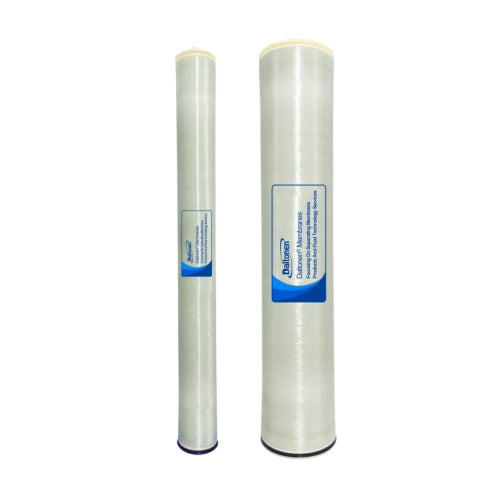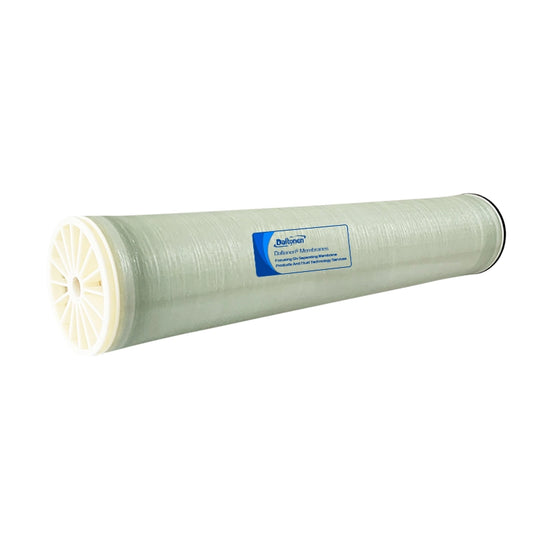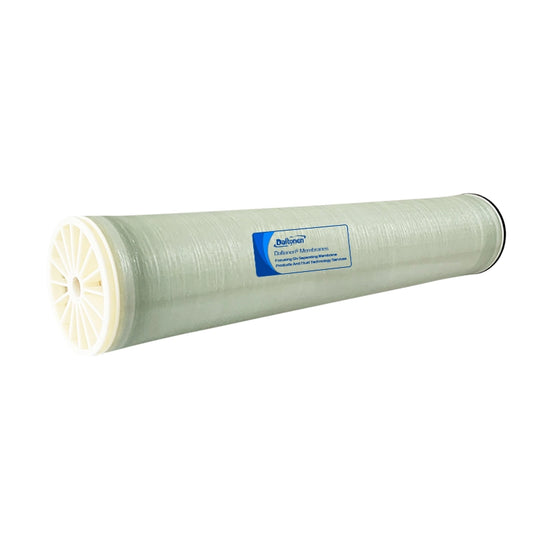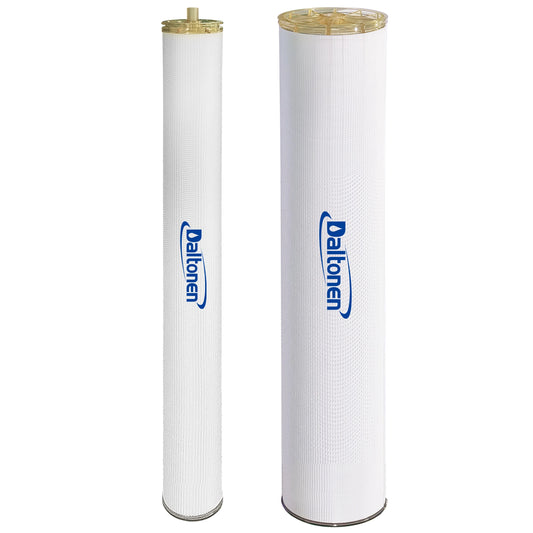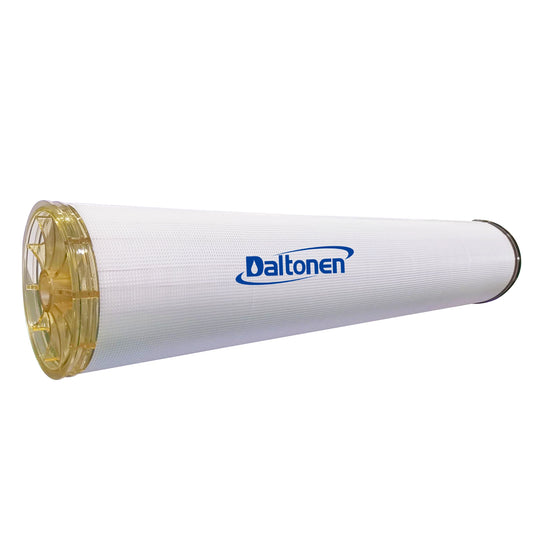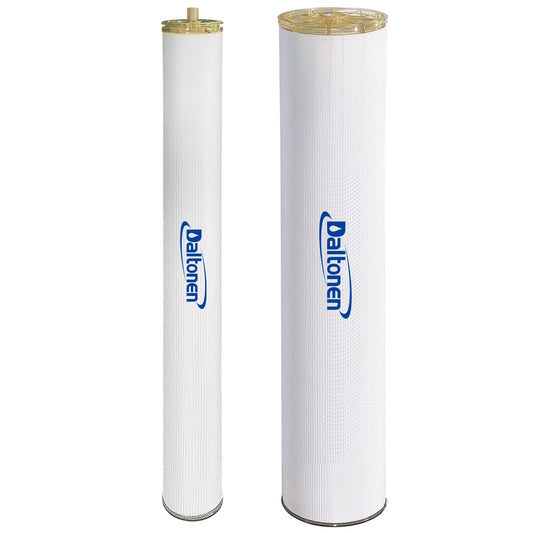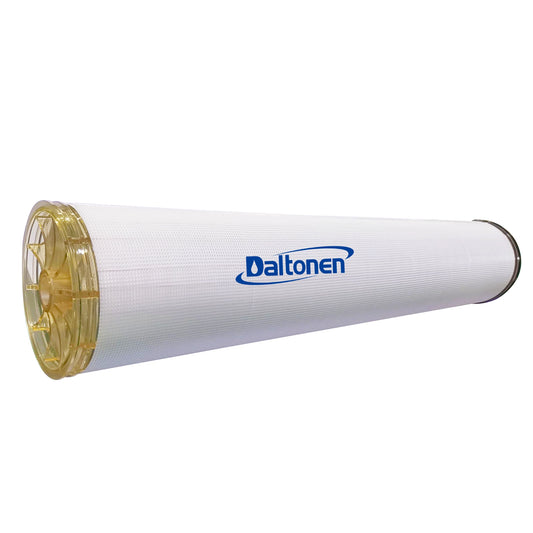Process Design Scheme for Reverse Osmosis System in a Small-Scale Seawater Desalination Plant
Process Design Scheme for Reverse Osmosis System in a Small-Scale Seawater Desalination Plant
1.0 Design Basis and Objectives
-
Source Water: Seawater (Total Dissolved Solids TDS 33,000 - 38,000 mg/L)
-
Design Capacity: Water Production 100 - 500 m³/day (Using 200 m³/day as the design basis, modularly scalable)
-
Product Water Standard: Potable water standard (TDS < 500 mg/L) or higher-grade industrial water requirements.
-
System Recovery Rate: ≥ 40% (Conservative design for small-scale systems to prevent scaling)
-
Core Process: Enhanced Pretreatment + Energy Recovery + Seawater Reverse Osmosis (SWRO)
-
Design Philosophy: Maximize operational cost reduction through high-efficiency energy recovery technology while ensuring system reliability.
2.0 Detailed Process Description
The flowchart below clearly illustrates the complete process from seawater intake to product water production for a small-scale desalination plant, highlighting the energy recovery and modular design features.
flowchart TD
subgraph Intake[Intake & Pretreatment]
A[Seawater Intake] --> B[Intake Point<br>Beach Well/Deep Sea Pipe];
B --> C[Coagulant Dosing];
C --> D[Media Filter<br>Dual-stage or Multi-Media];
D --> E[Reducing Agent Dosing];
E --> F[Cartridge Filter<br>5μm];
end
subgraph SWRO[Membrane Desalination & Energy Recovery]
F --> G[High-Pressure Pump];
G --> H[Energy Recovery Device PX];
H --> I[SWRO Membrane Array];
I -- Concentrate --> J[Energy Recovery Device PX];
J --> K[Concentrate Discharge];
I -- Permeate --> L[Product Water Tank];
end
subgraph Post[Post-Treatment & Distribution]
L --> M[CO2 Degasifier<br>or Caustic Dosing];
M --> N[Transfer Pump];
N --> O[Disinfection<br>UV/Chlorine];
O --> P[Point of Use];
end
subgraph CIP[Chemical Cleaning System]
Q[CIP Unit] --> I;
end
Step-by-Step Process Explanation:
1. Intake and Pretreatment System (Foundation of Reliability)
-
Intake: Beach well intake is highly recommended. Seawater filtered naturally through sand layers provides stable quality with low suspended solids and organic content, significantly simplifying pretreatment and reducing biofouling risk. If direct open seawater intake is used, more complex screens and strainers are necessary.
-
Pretreatment:
-
Coagulant Dosing: Adding coagulants (e.g., FeCl₃) to destabilize fine colloidal particles for subsequent filtration removal.
-
Media Filtration: Using Dual-Media Filters (anthracite + sand) or Dual-Stage Filtration (primary coarse, secondary fine) to effectively reduce turbidity and control the Silt Density Index (SDI₁₅ < 4).
-
Reducing Agent Dosing: If the seawater contains residual chlorine (e.g., from chlorination for biofouling control), sodium bisulfite (NaHSO₃) is dosed to neutralize it, protecting the SWRO membranes.
-
Cartridge Filtration: A 5μm precision filter acts as the final safety barrier before the SWRO membranes.
-
2. High-Pressure Pumping and Energy Recovery (Core of Energy Efficiency)
-
High-Pressure Pump: Raises the pretreated seawater to the required operating pressure for the SWRO membranes (approximately 5.5 - 6.5 MPa).
-
Energy Recovery Device (ERD): This is the key to economic feasibility for small-scale SWRO. Using an isobaric Pressure Exchanger (PX) type ERD, over 95% of the hydraulic energy from the high-pressure concentrate (approx. 5.5-6.0 MPa) is transferred directly to a portion of the feed seawater, reducing the system's total energy consumption by 35-40%. This can lower the specific energy consumption for small-scale plants to 3.0 - 4.5 kWh/m³.
3. Reverse Osmosis Desalination (Core Process Unit)
-
SWRO Membrane Array: Utilizes specialized high-rejection seawater membrane elements (e.g., SWC4B, SW30HRE). The pressure vessels are arranged in a single-stage, single-pass configuration, each containing 6-8 membrane elements.
-
Operation: High-pressure seawater flows across the membrane surface; pure water permeates through the membrane wall becoming product water, while salts are rejected forming concentrated brine. The system recovery rate is controlled around 40% to prevent scaling from sparingly soluble salts like CaSO₄ and CaCO₃.
4. Post-Treatment and Conditioning
-
pH Adjustment: SWRO permeate is slightly acidic and corrosive. Its pH must be raised to 7.5-8.5 using a CO₂ Degasifier or by dosing a base like NaOH to stabilize the water chemically, meet potable standards, and prevent corrosion of the distribution network.
-
Disinfection: Ultraviolet (UV) disinfection is used as the primary method, or a residual amount of chlorine (e.g., from sodium hypochlorite) may be maintained in the distribution network for continuous bactericidal protection.
3.0 Key Equipment and Design Parameters
|
System Section |
Key Equipment/Parameters |
Explanation |
|---|---|---|
|
Pretreatment |
Media Filters, Chemical Dosing Systems, 5μm Cartridge Filter |
Ensures SDI₁₅ < 4, Residual Chlorine < 0.1 ppm. |
|
High-Pressure System |
Multi-stage Centrifugal High-Pressure Pump, PX Pressure Exchanger |
Operating Pressure ~6.0 MPa, ERD Efficiency ≥ 95%. |
|
SWRO Membrane Array |
High-Rejection Seawater Membranes (Single Element Rejection ≥99.6%), FRP Pressure Vessels |
Membrane Flux 12-15 LMH, System Rejection Rate ≥ 99.3%. |
|
Chemical Dosing |
Antiscalant, Acid (HCl), Reducing Agent Dosing Systems |
Prevents scaling, controls pH, protects membrane elements. |
|
Control System |
PLC + HMI, integrated online monitoring of pressure, flow, conductivity |
Fully automated operation with one-touch start/stop and fault alarm functions. |
4.0 Scheme Characteristics and Brief Economic Analysis
1. Technical Characteristics:
-
High Efficiency and Energy Saving: The application of PX energy recovery technology is core to reducing energy consumption.
-
Modular and Compact Design: Main equipment can be skid-mounted, requiring small footprint and enabling quick installation.
-
High Adaptability: Suitable for independent water supply scenarios like remote areas and islands.
-
High Level of Automation: Capable of unattended operation and remote monitoring.
2. Brief Economic Analysis (Estimate based on 200 m³/day production):
-
Specific Energy Consumption: 3.5 - 4.5 kWh/m³
-
Chemical Cost: 0.5 - 1.0 RMB/m³
-
Membrane Replacement Cost (based on 5-year life): 1.0 - 1.5 RMB/m³
-
Maintenance Cost: 0.5 - 1.0 RMB/m³
-
Total Operating Cost per m³ (excluding depreciation): 5.5 - 8.0 RMB/m³
Summary
This scheme provides a technologically mature, energy-efficient, and easily implementable solution for small-scale seawater desalination projects. Its core lies in ensuring SWRO membrane security through enhanced pretreatment and significantly reducing operating costs by utilizing high-efficiency energy recovery devices, making small-scale desalination economically viable. For actual projects, detailed process calculations and equipment selection must be based on specific seawater quality data.
